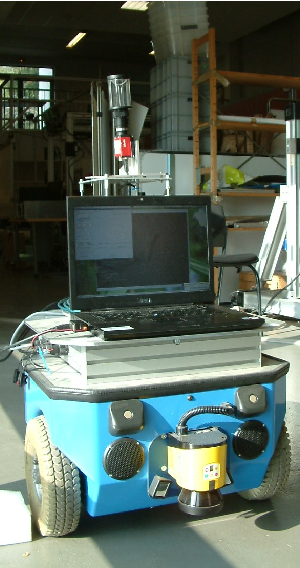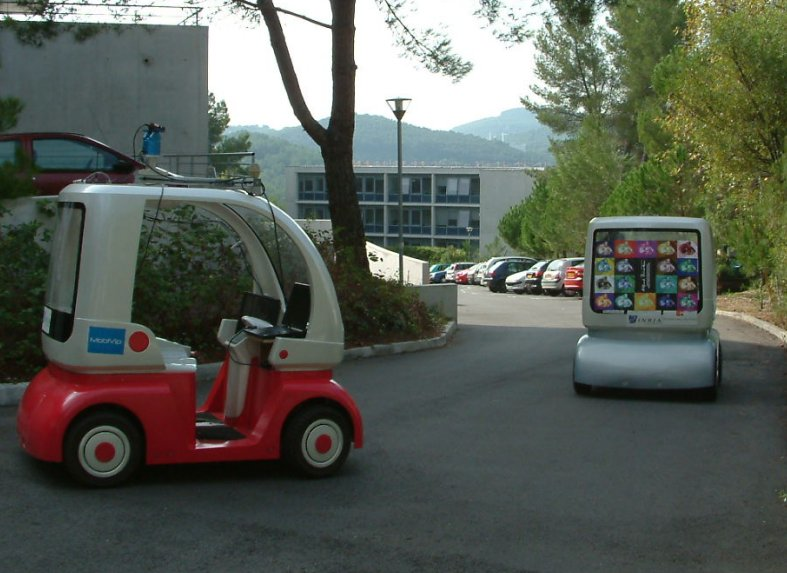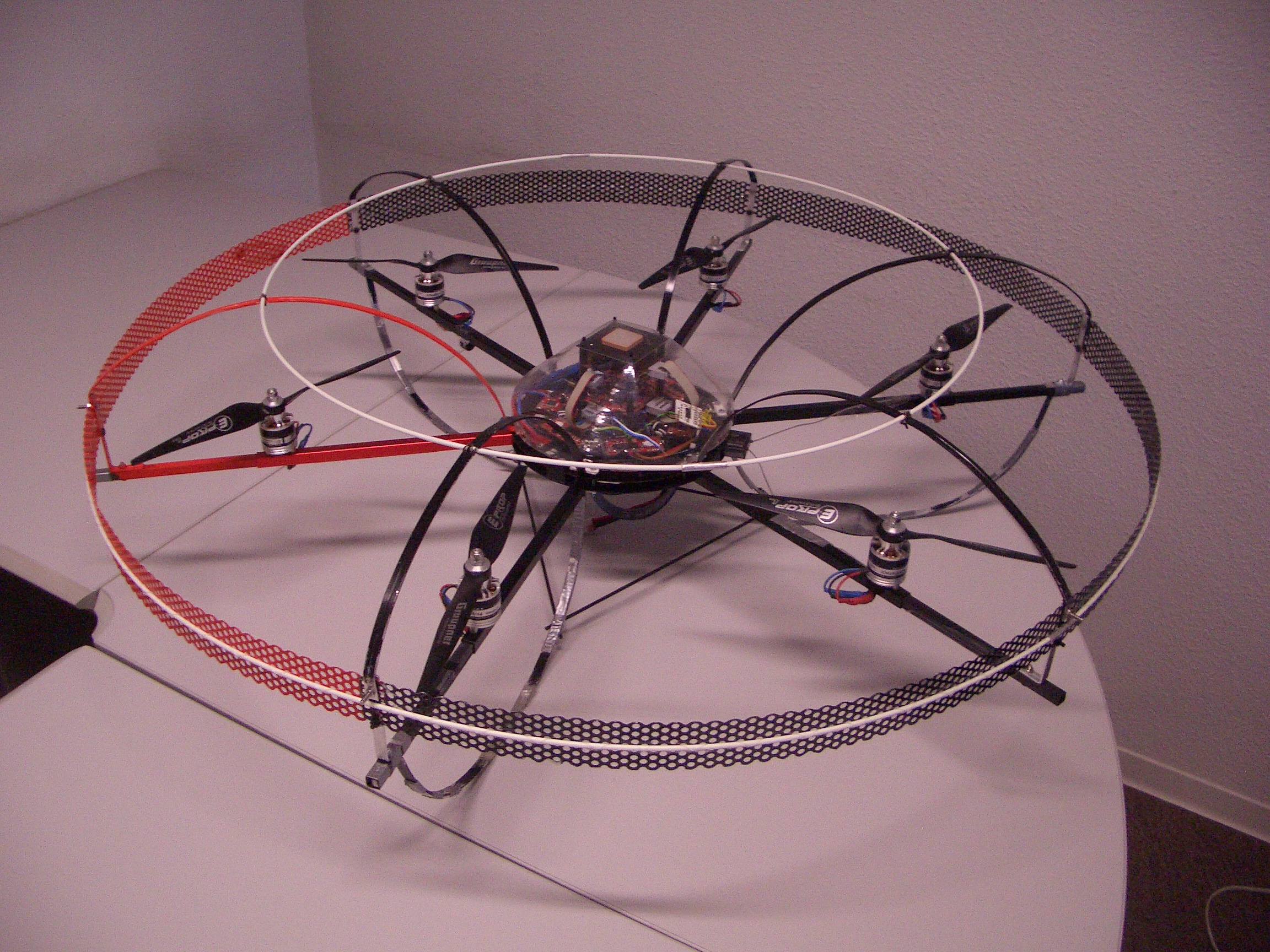Section: Software
Experimental Testbeds
Methodological solutions to the multi-faceted problem of robot autonomy have to be combined with the ever present preoccupation of robustness and real-time implementability. In this respect, validation and testing on physical systems is essential, not only as a means to bring together all aspects of the research done in ARobAS –and thus maintain the coherence and unity of the project-team–, but also to understand the core of the problems on which research efforts should focus in priority. The instrumented indoor and outdoor wheeled robots constitute a good compromise in terms of cost, security, maintenance, complexity and usefulness to test much of the research conducted in the project-team and to address real size problems currently under investigation in the scientific community. For the next few years, we foresee on site testbeds dedicated to ground robotic applications (figure 1 Left and Center).
-
HANNIBAL Indoor mobile robot
Our cart-like platform, built by Neobotix can operate on flat surfaces, in both indoor and outdoor environments. This platform is equipped with the various sensors needed for SLAM purposes, autonomous navigation and sensor-based control. With its programming further developed to become user-friendly, it has become one of the team's main testbeds for fast prototyping of perception, control and autonomous navigation algorithms.
-
CyCab Urban electrical car
Two instrumented electrical cars of the CyCab family are destined to validate researches in the domain of Intelligent urban vehicle. CyCabs are used as experimental testbeds in several national projects.
-
Hexacopter VTOL vehicle
A basic version of this machine was recently acquired from Mikrokopter Inc.(Germany) by our colleagues (T. Hamel, G. Ducard, M.-D. Hua) from the SIS (Signal, Images et Systèmes) research pole at I3S-UNSA-CNRS. It has a diameter of 90cm, weights about 1.5 kg, and can carry a payload up to 1.5 kg (figure 1 Right). The flight time autonomy varies between 6mn and 18mn, depending on the payload, and it can be extended provided that the battery capacity is extended accordingly. The machine's external envelope has been modified for safety reasons. Initial flight tests have been conducted, and the aircraft is currently being equipped with various sensors (GPS, accelerometers, gyrometers, camera,...). We are working with our colleagues from I3S to control this vehicle with the aim of providing it with large autonomy capabilities and robust performance. It is also a benchmark to validate various estimation/control issues that we are currently investigating.





